第27章
None the less, the rule of adherence to precedent is applied with less rigidity in the United States than in England, and, I think, with a rigidity that is diminishing even here.The House of Lords holds itself absolutely bound by its own prior decisions.18 The United States Supreme Court and the highest courts of the several states overrule their own prior decisions when manifestly erroneous.19 Pollock, in a paper entitled "The Science of Case Law," written more than forty years ago, spoke of the freedom with which this was done, as suggesting that the law was nothing more than a matter of individual opinion.20 Since then the tendency has, if anything, increased.An extreme illustration may be found in a recent decision of a federal court.21 The plaintiff sued a manufacturer of automobiles to recover damages for personal injuries resulting from a defective car.On the first trial he had a verdict, which the Circuit Court of Appeals for the second circuit reversed on the ground that the manufacturer owed no duty to the plaintiff, the occupant of the car, since the latter was not the original purchaser, but had bought from some one else.22 On a second trial, the judge, in obedience to this ruling, dismissed the complaint, and a writ of error brought the case before the same appellate court again.In the meantime, the New York Court of Appeals had held, in an action against another manufacturer, that there was a duty in such circumstances, irrespective of privity of contract.23 The federal court followed that decision, overruled its prior ruling, and reversed the judgment of dismissal which had been entered in compliance with its mandate.The defendant in that case who first reversed the judgment because the complaint had not been dismissed, and then suffered a reversal because on the same evidence the complaint had been dismissed, probably has some views of his own about the nature of the judicial process.I do not attempt to say whether departure from the rule of adherence to precedent was justified in such conditions.One judge dissenting held the view that the earlier decision should have been applied as the law of the case irrespective of its correctness, like the rules of res adjudicata.The conclusion of the majority of the court, whether right or wrong, is interesting as evidence of a spirit and a tendency to subordinate precedent to justice.How to reconcile that tendency, which is a growing and in the main a wholesome one, with the need of uniformity and certainty, is one of the great problems confronting the lawyers and judges of our day.We shall have to our way here as elsewhere in the law.
Some where between worship of the past and exaltation of the present the path of safety will be found.
Our survey of judicial methods teaches us, I think, the lesson that the whole subject matter of jurisprudence is more plastic, more malleable, the moulds less definitively cast, the bounds of right and wrong less preordained and constant, than most of us, without the aid of some such analysis, have been accustomed to believe.We like to picture to ourselves the field of the law as accurately mapped and plotted.We draw our little lines, and they are hardly down before we blur them.As in time and space, so here.
Divisions are working hypotheses, adopted for convenience.We are tending more and more toward an appreciation of the truth that, after all, there are few rules; there are chiefly standards and degrees.It is a question of degree whether I have been negligent.It is a question of degree whether in the use of my own land, I have created a nuisance which may be abated by my neighbor.It is a question of degree whether the law which takes my property and limits my conduct impairs my liberty unduly.So also the duty of a judge becomes itself a question of degree, and he is a useful judge or a poor one as he estimates the measure accurately or loosely.He must balance all his ingredients, his philosophy, his logic, his analogies, his history, his customs, his sense of right, and all the rest, and adding a little here and taking out a little there, must determine, as wisely as he can, which weight shall tip the scales.If this seems a weak and inconclusive summary, I am not sure that the fault is mine.Iknow he is a wise pharmacist who from a recipe so general can compound a fitting remedy.But the like criticism may be made of most attempts to formulate the principles which regulate the practice of an art.W.Jethro Brown reminds us in a recent paper on "Law and Evolution," 24 that "Sir Joshua Reynolds' book on painting, offers little or no guidance to those who wish to become famous painters.Books on literary styles are notoriously lacking, speaking as a rule, in practical utility." After the wearisome process of analysis has been finished, there must be for every judge a new synthesis which he will have to make for himself.The most that he can hope for is that with long thought and study, with years of practice at the bar or on the bench, and with the aid of that inward grace which comes now and again to the elect of any calling, the analysis may help a little to make the synthesis a true one.
In what I have sald, I have thrown, perhaps too much, into the background and the shadow the cases where the controversy turns not upon the rule of law, but upon its application to the facts.Those cases, after all, make up the bulk of the business of the courts.They are important for the litigants concerned in them.They call for intelligence and patience and reasonable discernment on the part of the judges who must decide them.